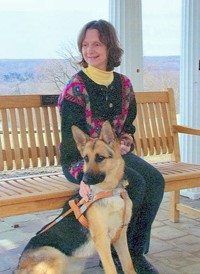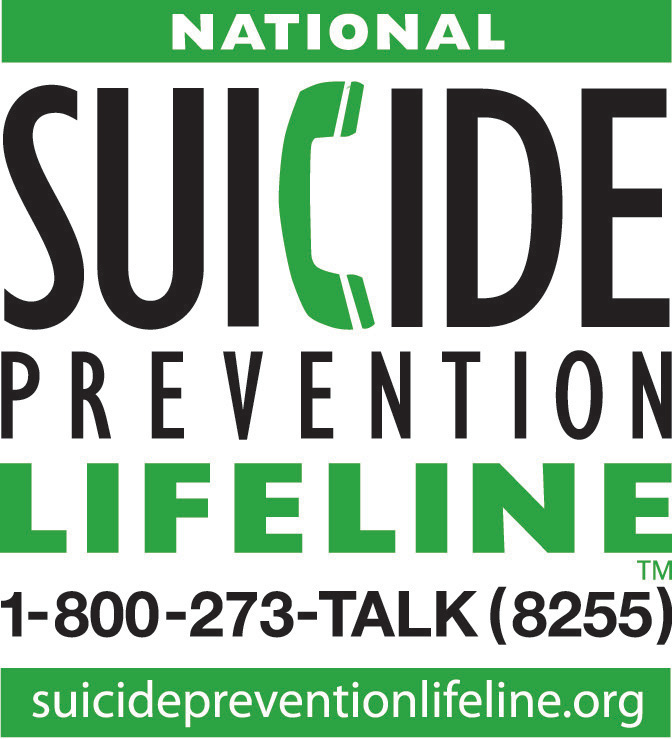“S U I C I D E”
There, your computer didn’t blow up. Your phone didn’t burst into flames. I guess it’s no secret that people are afraid of blindness and, by extension, blind people. But what about suicide? If you want to empty a room in ten seconds flat, start talking about suicide!
In 2016 I wrote a post about suicide and my experience with it. Since September is National Suicide Prevention Month, and the week around September 11 is National Suicide Prevention Week, it is time to revisit what I said, especially in the world of COVID and the world events we have been experiencing. The pandemic itself has brought about policies such as social distancing, social isolation, and quarantine that can heighten vulnerability to suicide especially among older people, people with depression or people with preexisting mental health issues. During the past year, on VisionAware we have discussed what that people with vision loss can do to lessen the effects of social isolation. Today I am going to address suicide prevention directly. First, let me cite a few facts:
Facts About Suicide and Depression from Suicide Awareness Voices of Education (SAVE)
Suicide is the 10th leading cause of death in the US for all ages. The highest suicide rates in the US are among Whites, American Indians and Alaska Natives. (CDC ).
There is one suicide for every estimated 25 suicide attempts. (CDC)
There is one suicide for every estimated 4 suicide attempts in the elderly. (CDC)
Suicide takes the lives of over 48,500 Americans every year. (CDC)
Depression affects 20-25% of Americans ages 18+ in a given year. (CDC)
Only half of all Americans experiencing an episode of major depression receive treatment. (NAMI)
80% -90% of people that seek treatment for depression are treated successfully using therapy and/or medication. (TADS study)
Talking About Mental Health and Suicide
For several years, I’ve been writing and giving speeches about mental health and suicide.
Why do I do it? Because people need to hear my voice and my experience. This quote sums it up: Towards the end of the first Harry Potter book Dumbledore says to Harry, “The truth, it is a beautiful and terrible thing, and should therefore be treated with great caution.” (J. K. Rowling, Harry Potter and the Philosopher’s Stone (1997).
So, while I am honest and open about my own suicide attempt, I am keenly aware that this honesty might be difficult for you — depending on your personal experience. Please stay with me. Because life is a beautiful thing . . . stay with me…
 Sue Wiygul Martin with Guide Dog
Sue Wiygul Martin with Guide Dog
My Story
I am blind by my own hand. By my mid-twenties, a whole bunch of things had gone wrong in my life. I was divorced; I had lost my job, and I had moved back in with my parents. To my idealistic 26-year-old self, they all felt like monumental failures.
From where I stand now, I can see them for what they were — tough breaks. But at the time all I could see, feel, and experience was failure.
So, I attempted suicide with a gun when I was 26 years old. I wasn’t successful. After three weeks in the hospital, I returned to a changed world. What was I going to do next? How could I get on with life in a world I could no longer see?
I Was Lucky
Before I even left the hospital, I met with a vocational rehabilitation counselor. I don’t remember much of what he said apart from the fact that two people would soon be entering my life. They would teach me how to live with blindness. Although it sounded good, I was skeptical.
I had never known anyone who was blind. Heck, I had never known anyone with any disability. And I was still just as depressed as I had been when I shot myself. But what choice did I have?
At the time my life with blindness began, there were two specialties within the profession of vision rehabilitation: rehabilitation teaching, now called vision rehabilitation therapy, and orientation and mobility (O&M). Today we also have low vision therapists and assistive technology instructors. My rehabilitation teacher was Vera McClain. My orientation and mobility instructor was Jeff Elliott.
Vera walked in the door for the first time just three weeks after I returned from the hospital. Jeff came along about three weeks after that. These two individuals became the most important people in my life.
There Wasn’t an App for That
Technology has been a marvelous leveling agent for people who are blind. I have six gadgets in my house that talk to me: three laptops, one desktop computer, a tablet, and a phone. I use technology for both recreation and work. None of that technology existed back then. I did not get my first talking computer until four years after I became blind. “Back in the day” when I was learning to live with blindness, vision rehabilitation didn’t have any shortcuts. There were no apps. I couldn’t pick up my phone and say, “call my husband at work.” The rehabilitation services I received were “by the book.” And that “book” was written by the United States Department of Veterans Affairs. Vision rehabilitation, as we know it today, was invented by the US Department of Veterans Affairs, during and immediately after, World War II. It was born out of the dire need to help the many veterans who returned from that war with new blindness.
I spent six months working with Vera and almost a year working with Jeff. And it was hard work.
Emotional Adjustment
A year after becoming blind, I chose to enroll in a master’s degree program at Western Michigan University. At the time the degree was in “blind rehabilitation,” now called blindness and low vision studies. I considered pursuing a degree in some mental health field but the time and expense seemed daunting. I could get the master’s degree in blind rehab in a year and, having just gone through the process of learning to live with blindness myself, I figured I could do a pretty good job in the profession.
My parents dropped me off at Western Michigan University a year and four months after my suicide attempt. The next day I walked into my first class and met the man I’ve spent 31 years with. That was quick, right? I went to Western against the advice of almost everybody. “You haven’t been blind long enough.” Or, “You haven’t fully made the emotional adjustment.”
But I knew I was ready. My parents and teachers supported me.
There are many paths to learning to live with blindness. The path I took turned out to be the right one for me. For me, emotional adjustment to blindness was what happened while I was busy learning to live again.
Moving Forward
In 2013, I wrote a book about my suicide. You can read about it on VisionAware. Since that time, I have written a memoir entitled In Dog We Trust. I have worked in the field of blind rehabilitation for over 20 years as a Vision Rehabilitation Therapist (VRT), a Low Vision Therapist (LVT), and an assistive technology specialist. I currently work with the Office of Organization Development and Engagement within the Veterans Affairs Office of Information and Technology.
Breaking the Silence
If you live long enough, your life will be touched by suicide — either your own or that of someone you know. Really? Is that an outrageous claim? No, it’s based on four years of standing before audiences, telling my story, and listening to people afterwards. Every time I’ve given a presentation, every single time, more than one person has told me they have either considered suicide or attempted suicide. And the next words out of their mouth are usually, “And I’ve never told anyone until now.”
My dream is a world in which suicide does not exist. Impossible perhaps but I’m going to dream it anyway. I know I, alone, can’t make that dream come true. All I can do is continue writing, standing before audiences, telling the truth.
Suicide Prevention Line
 National Suicide Lifeline Logo
National Suicide Lifeline Logo
If you are in crisis, talk to someone you trust. Free confidential help is available any time at 800-273-8255. Or text HOME to 741741 for free, 24/7 crisis counseling at SuicidePreventionlifeline.org.
Additional Resources about Suicide and Depression
If you suspect someone you know is in crisis, ask them about it. Ask with genuine concern. Do not be judgmental. Be supportive. One of the best resources for facts, figures, and support may be found at Live Through This.